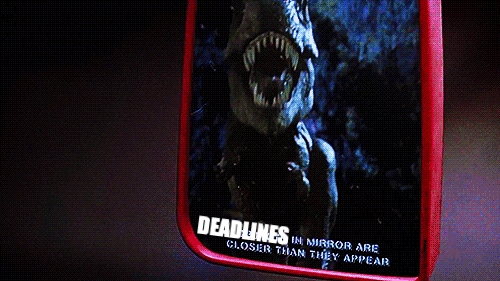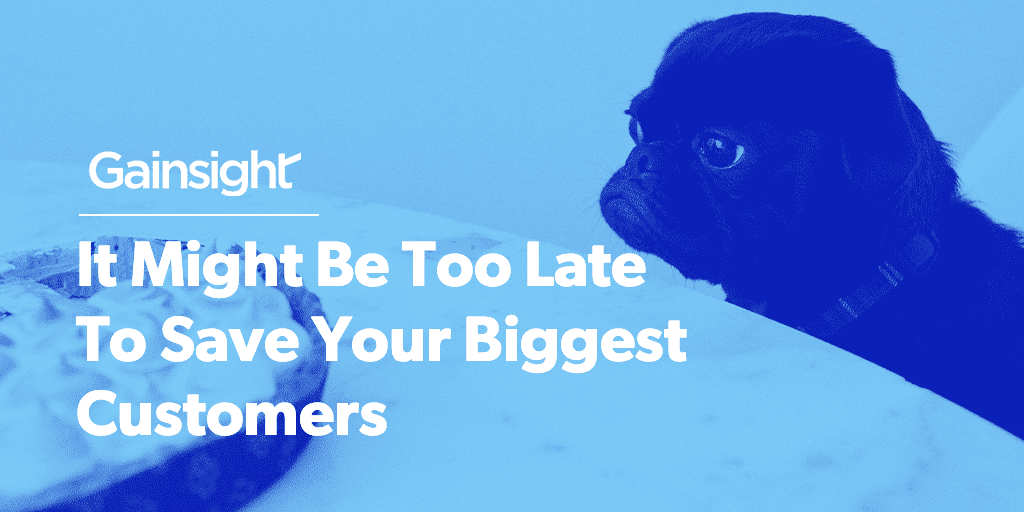It’s Thanksgiving tomorrow in the U.S., and if you haven’t gotten your supplies and ingredients together, you’re not
quite totally screwed, but at best you’ll be in trouble at the grocery store tonight.
There are thresholds for these things, and they have varying degrees of flexibility built in. As an expert on
procrastination, I can say confidently that you can make it work some of the time. You can even find near-supernatural
inspiration with a hard deadline staring you in the face.

But when turkey day rolls around and you have no turkey, no tofurkey, no potatoes, no pie, and no hope, it’s too
late.
And the point I’m trying to make is that it’s already too late.
Your 2020 Customer Success Strategy
Most companies budget
annually based on a fiscal year. Those budgets are broken down and adjusted quarterly—or in some cases
programmatically. There are processes to revise, spend more, spend less, or reallocate funds as needed month-to-month
or even week-to-week. But the bigger the adjustment, the harder it is to make. That’s why bigger programs are budgeted
for annually based on long-term forecasts in service of a bigger overall strategy.
It’s easy to get post-it notes on an ad hoc basis. It’s a huge thing to spin up a new department.
And we’re not just talking about the enterprise here. Even in a third-year startup flush with VC money, it takes time
to, for example:
- Figure out a strategy.
- Hire a team lead to execute it.
- Staff the team.
- Design processes.
- Buy/build a tech stack.
- Implement those tools and processes.
- Profit.
Think about your own company’s investment process. How agile is it? If you had to put a timeframe around each of
those steps, how long might each one take?
- Figure out a strategy. 2 weeks?
- Hire a team lead to execute it. 6 weeks?
- Staff the team. 6 weeks?
- Design processes. 4 weeks?
- Assess/buy technology. 6 weeks?
- Implement those tools and processes. 6 weeks?
- Profit. ???
Depending on when your fiscal year begins, you’ve probably already budgeted out FY21. You have your
hiring reqs sketched out. You have your software spend locked in. You probably already know which subscriptions you’re
going to renew.
And you probably already know which ones you’re not.
Your Customer’s 2020 Success Strategy
Let’s turn it around.
It’s November 2019. We’re past most companies’ budgeting seasons. If you sell one-year contracts, your customers
could already have their renewal budgeted—or, too bad for you, that money may be going somewhere else. After all, your
customers’ natural tendency is toward churn.
If you’re at the Transformation Stage of customer success maturity, you’re already doing everything you can to drive
success at scale—you’re collecting accurate signals from across functions, you’re synchronizing them into meaningful
insights, you’re taking automated and person-to-person action at the right time with the right message, and you’re
closing the loop by proving your product’s value to all stakeholders.
Click here to find out where your CS org falls on the maturity scale
But if you’re more of a reactive organization, it might already be too late to save your biggest customers.
That’s because big ships take longer to turn. If you’re guessing at your own timetables for assessing, buying, or
renewing technology, try and imagine what your customers’ might be. Six months? Eight months? A full year?
And how long will it take you to spin up the necessary people, processes, and technology to impact their
decision-making with regards to your product: six months? Eight months? A full year?
Stop kicking the can.
There are a lot of things you can afford to wait on when it comes to investments. The Tesla Cybertruck (CYBRTRCK?),
for example. I’ll be real with you: I want one. SO. BAD. It’s not like they designed it for me. It’s like I was
designed for it.

But I’m going to wait on that. I don’t like buying the V1 of anything. I’m skeptical it will be out in the next three
years, and a lot can change in that time. Maybe I won’t be able to afford it in three years. Maybe some other company
will release an even better, even more retrofuturistic Blade Runner car—one that actually flies! Maybe Elon Musk will
invent teleportation, rendering all vehicles obsolete. It could be anything.
But when it comes to your customers, you
cannot afford to wait and see what happens. Their renewal dates are hard deadlines on the calendar whether you
can see them or not—whether you have the ability to impact the outcome or not.
Your customers are precious. And if you missed your window to move up the maturity curve this year, what makes you
think you’ll hit it next year?
We hear from customer success leaders a lot of very valid issues related to timelines:
- We don’t have the right
data. - Our data isn’t clean.
- We don’t have IT
resources. - Our people and processes just aren’t ready for
technology.
Those are real concerns that are top of mind for us too when Gainsight is evaluating organizational or systems
changes. And maybe you will have solved some or all by next year. Maybe you will have more flexibility next year.
Maybe your company really could become more agile as you scale.
Unfortunately, you can’t postpone your renewal dates until you solve those issues. It’s time to take every concrete
step you can to mature your customer success efforts today—while there’s still time.
